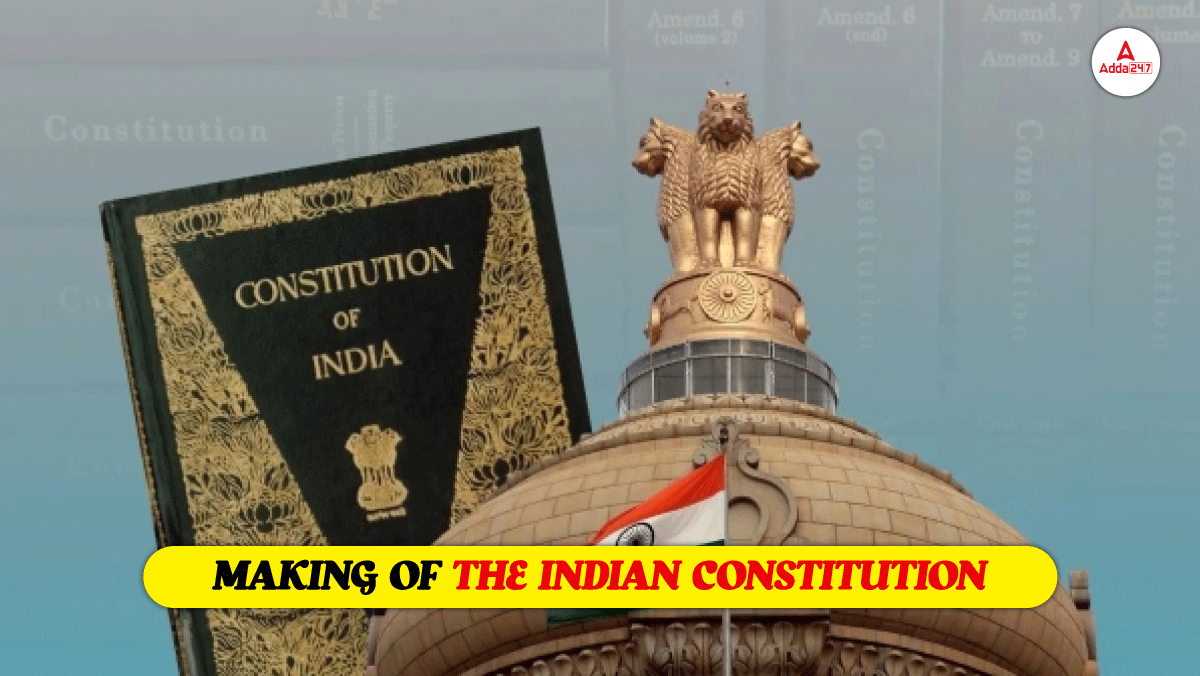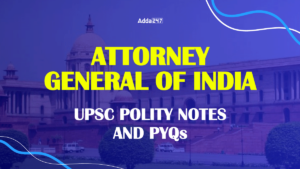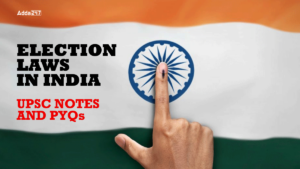Table of Contents
Making of Indian Constitution: The Constitution is the most important set of laws in a country, and in India, it’s the supreme law. This document outlines how the government works, what powers it has, and what rights and duties the people have. It’s the lengthiest written constitution in the world and gives more importance to the constitution itself rather than the Parliament. The people agreed to follow it, and even the Parliament can’t change the basic structure of the constitution.
Constituent Assembly
MN Roy proposed the idea of the Constituent Assembly for India in 1934 and it was first time in 1935 when Indian National Congress (INC) officially demanded a constituent assembly to frame Indian constitution.
- In 1938 Jawaharlal Nehru advocated for framing constitution by the constituent assemble elected on basis of universal adult franchise.
- British government accepted this proposal in 1940 under ‘August Offer’.
- Following extensive discussions, Cripps mission was dispatched to India in 1942 which was led by Sir Stanford Cripps.
- Cripps, a member of cabinet, came to India with a draft proposal of the British government on framing constitution, which would be adopted after world war II.
- This proposal was rejected by the Muslim League, as they wanted to divide India and demanded for 2 separate constituent assembly.
- Cabinet mission rejected the idea of two constituent assemblies, and put forward the idea of constituent assembly.
Setting up of the Constituent Assembly
The Constituent Assembly, initially elected for all of undivided India, and convened its first session on December 9, 1946. Later, on August 14, 1947, it reconvened as the supreme Constituent Assembly for the Dominion of India. Members were chosen indirectly by the Provincial Legislative Assembly (Lower House only), following the plan suggested by the Cabinet Mission.
The Features of the Scheme were
We will be discussing about the features of the proposal and the objectives of the resulting constituent assebmly further in this article;
- Total strength of the constituent assembly was 389.
- 296 seats were allotted to British India and 93 seats were allotted to princely states.
- Each province and princely state were to be allotted seats in proportion to their population.
- Seats within each province were divided among three main committees (Muslim, Sikh, and General) based on their respective populations.
- Members of each community in the Provincial Legislative Assembly elected representatives through proportional representation with a single transferable vote.
- The representatives from princely states were to be nominated by the heads of those states.
- In 1946, congress won 208 seats and Muslim league won 73 seats.
- The 93 seats which were allocated for the princely states remained empty as they decided to stay away from the Constituent assembly.
- Mahatma Gandhi was not part of Constituent assembly as he chose to stay away.
- Though the constituent assembly was not elected on the basis of Universal Adult Franchise but still it consisted of all sections of society which includes: Hindu, Muslim, Sikh, Christian, SCs, STs, Women.
Working of the Constituent Assembly
The constituent assembly held its first meeting on December 9,1946 wherein only 211 members were present.
- The first meeting was boycotted by the Muslim League and insisted for Pakistan.
- Dr. Sachchidananda Sinha was elected as temporary president of the assembly.
- Later Dr. Rajendra Prasad was elected as president of the constituent assembly and H.C. Mukherjee and V.T. Krishnamachari were elected as Vice-President of the assembly.
Objectives of the Constituent Assembly
Learning about the objectives will help us gain more understanding about the situations at that time and measures taken by the policy makers to augment those situations in our favor
- The Constituent Assembly formally began its task of creating the Constitution of India on December 13, 1946, when Jawaharlal Nehru presented the Objectives Resolution.
- This resolution aimed to declare India as an Independent Sovereign Republic and establish a Constitution for its future governance.
- The resolution outlined broad principles that would guide the Constituent Assembly’s work, and it was unanimously adopted on January 22, 1947.
- Now in June 1947 Mountbatten Plan was accepted for partition of India.
Impact of Independence Act on Constituent Assembly
Till now the constituent assembly was working to frame constitution for the undivided India, but after partition things changed. Below we have discussed in detail about the impacts of Independence act on Constituent Assembly.
- Representatives from princely states gradually joined the Assembly, with six states’ representatives becoming part of it on April 28, 1947. Following the acceptance of the Mountbatten Plan on June 3, 1947, which proposed the partition of the country, representatives from most other princely states also took their seats in the Assembly.
- Assembly was made a sovereign body to alter and frame any law.
- Strength of constituent assembly came down to 299 as the members of Muslim League withdrew their membership.
Functions of the Constituent Assembly
In addition to making of Indian Constitution and enacting the ordinary laws, the Constituent Assembly also performed the following functions:
- Membership enrollment in the Commonwealth was corrected in May 1949.
- The national flag was embraced on July 22, 1947.
- The national anthem was officially adopted on January 24, 1950.
- The national song was also adopted on January 24, 1950.
- Dr. Rajendra Prasad was elected as the inaugural President of India on January 24, 1950.
In total, the Constituent Assembly conducted 11 sessions spanning 2 years, 11 months, and 18 days. The framers of the Constitution studied the constitutions of approximately 60 countries, and the Draft Constitution was under consideration for 114 days. The overall cost incurred in the Constitution-making process amounted to Rs 64 lakh.
On January 24, 1950, the Constituent Assembly concluded its final session. Despite this, it didn’t dissolve and continued as the provisional parliament of India from January 26, 1950, until the establishment of the new Parliament after the initial general elections in 1951-52.
Committees of the Constituent Assembly
The Constituent Assembly designated various committees to address different aspects of constitution-making, comprising eight major committees and several minor committees. A total of 22 committees were chosen to handle a range of tasks related to Constitution-making, with 10 focusing on procedural matters and 12 on substantive affairs. Below are the names of these committees and their respective chairpersons:
| Major Committees of the Constituent Assembly | |
| Major Committees | Chairman |
| Drafting Committee | Dr. B.R. Ambedkar |
| Union Power Committee | Jawaharlal Nehru |
| Union Constitution Committee | Jawaharlal Nehru |
| Provincial Constitution Committee | Vallabhbhai Patel |
| Advisory Committee on Fundamental Rights, Minorities and Tribal and Excluded Areas(This committee had 5 sub committees) | Vallabhbhai Patel |
| Steering Committee | Dr. Rajendra Prasad |
| Rules of Procedure Committee | Dr. Rajendra Prasad |
| States Committee | Jawaharlal Nehru |
| Minor Committees of the Constituent Assembly | |
| Minor Committee | Chairman |
| Finance and Staff Committee | Dr. Rajendra Prasad |
| Credentials committee | Alladi Krishnaswami Ayyar |
| House committee | B. Pattabhi Sitaramaya |
| Order of Business committee | Dr. K.M. Munshi |
| Ad-Hoc Committee on National Flag | Dr. Rajendra Prasad |
| Committee on function of constituent assembly | G.V. Mavalankar |
| Ad-Hoc committee on Supreme court | S. Varadachari |
| Committee on chief commissioners Provinces | B. Pattabhi Sitaramaya |
| Expert Committee on financial provisions | Nalini Ranjan Sarkar |
| Linguistic Province Commission | S.K. Dar |
| Special Committee to examine the draft constitution | Jawaharlal Nehru |
| Press Gallery committee | Usha Nath Sen |
| Ad-hoc committee on Citizenship | S. Varadachari |
The first draft was published in February 1948 after the suggestions from the public the second draft was published in October 1948.
Enactment of the Constitution
After the initial drafts, it was time for the final draft to be presented also it should be noted that constituent assembly sat for only 141 days in total
- The final draft was introduced for first reading on November 4, 1948the general discussion went on for 5 days.
- It was followed by the second reading on November 15, 1948 and lasted till 17th October 1949.
- During this phase 7653 proposals were made and 2473 were discussed in the assembly.
- The draft was presented for the third reading on November 14th, 1949 and on 26 November it was declared passed after receiving signatures
- The constitution intialy had 395 articles and 8 Schedules
- Dr. B R Ambedkar s considered to be the Father of the Constitution of India.
Enforcement of the Constitution
Now that the constitution had been drafted it was time for the enforcement for the constitution
- It should be noted that article 5, 6, 7, 8, 9, 60, 324, 366, 367, 379, 380,388, 391, 392 and 393 came into force on November 26, 1949 itself.
- The remaining provisions were enforced on January 26, 1950.
- January 26, was chosen for commencement as on this day only in 1930, Purna Swaraj was adopted.
Sources of the Constitution at a Glance
| Countries | Features Adopted by Indian Constitution |
| United Kingdom |
|
| United States |
|
| Ireland |
|
| Australia |
|
| France |
|
| Canada |
|
| Soviet Union Soviet Union |
|
| Germany Weimar Republic |
|
| South Africa |
|
| Japan |
|
Criticism of the Constituent Assembly
We should discuss about the criticism received by the constituent assembly to develop comprehensive understanding about the constituent assembly, these are the criticism of constituent assembly;
- Not a Representative Body : Critics argue that the constituent assembly didn’t had members elected by people of India on basis of Universal Adult Franchise.
- Not a Sovereign Body : Constituent assembly was created based on British proposals and held its session with permission of British Government.
- Time Consuming : The Constituent assembly took long time to create the constitution in comparison to American constitution which was drafted in4 months.
- Dominated by Congress : The constituent assembly was dominated by the Congress, which to critics seemed to be a one party system.
- Lawyer Domination : The constituent assembly was dominated by the Lawyers, resulting into the bulky and complex constitution.
- Dominated by the Hindus : Critics cites that the constituent assembly was majorly dominated by only one community that is the Hindus.
| ALSO READ | |
| Indian Polity Notes | Salient Feature of Indian Constitution |
| Fundamental Rights | Fundamental Duties |



 Attorney General of India UPSC Notes (Ar...
Attorney General of India UPSC Notes (Ar...
 Election Laws in India UPSC Notes
Election Laws in India UPSC Notes
 Indian Parliamentary Forums UPSC Notes
Indian Parliamentary Forums UPSC Notes





